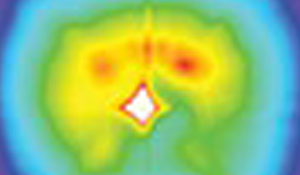Selecting a Light Measurement Solution: 7 Critical Parameters

Precision measurement of luminance and chromaticity in information displays, light sources, or other light emitting or reflecting materials requires careful consideration of application requirements in order to identify the optimal light measurement system for the job. Resolution, imaging speed, and other parameters should be carefully weighed when designing a system. Imaging colorimeters are high sensitivity, high-accuracy scientific-grade imaging systems and with multiple sensor, filter, and lens options available, and these systems can be optimized to meet the specific needs of an application. The priority of each of the following parameters should serve as a guide for selecting a colorimeter-based system:

|
Color Accuracy: The ability to accurately match measurements to a color coordinate system, such as the CIE or L*a*b* Color Space. |

|
Luminance Accuracy: Absolute accuracy of luminance measurements; calibration compensates for system noise and photopic filter accuracy. |

|
Signal to Noise: Larger electron well depths and low system noise yields greater precision and higher contrast ratios in a single image. HDR imaging capabilities are also available for higher-contrast measurements if required. |

|
Pixel Resolution: Distinguish fine detail within images. For a given field of view, higher imaging sensor pixel resolution means greater spatial detail. |

|
Imaging and Readout Speed: Time required to capture and readout images from the imaging sensor. A trade-off exists between speed, noise and captured image detail. |

|
Operating Temperature: Image sensors are selected for high-speed imaging and the highest image quality to meet performance specifications across a range of ambient temperatures. |

|
Field of View and Electronic Lenses: The sensor and lens are chosen for each application based on the required field of view and working distance. Smart lenses allow camera operation at any working distance, enabling the same camera to be used for many future applications. |
Join Mailing List
Stay up to date on our latest products, blog content, and events.
Join our Mailing List
